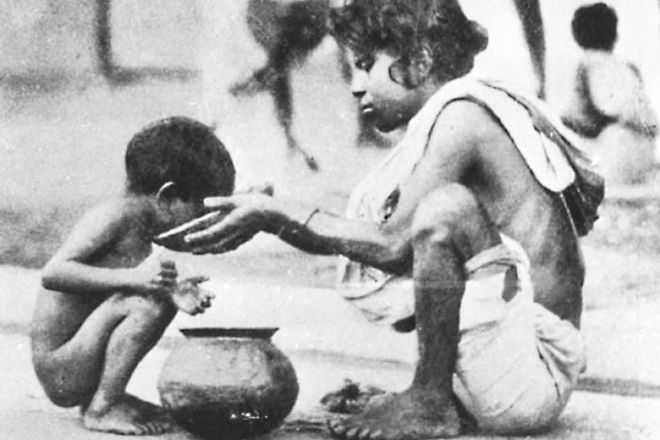30 lakh died ‘due to British failure in 1943’
Manas Dasgupta
AHMEDABAD, March 31
A research paper by a team headed by a professor at the Indian Institute of Technology, Gandhinagar, has blamed the “complete policy failure” of the then British government for the deaths of nearly 30 lakh people in India in the 1943 famine, also known as the Bengal Famine, rather than due to the crop failure caused by depleted rainfall.
The team, headed by Vimal Mishra, associate professor in the Civil Engineering Department, included Amar Deep Tiwari, Saran Aadhar and Reepal Shah of the same department, Mu Xiao and Dennis Lettenmaier of the Department of Geography in the University of California, and DS Pai at the India Meteorological Department, Pune.
Based on publications and available records, the team studied the direct relation between soil moisture conditions and food shortages during the 12 major periods of famine in various parts of India between 1870 and 2016 and found that of the major occurrences before 1947, only the famine of 1943, when Winston Churchill was the British Prime Minister, could not be concluded to have been caused by monsoon failure.
“Famines had occurred earlier than 1943 also, but most of the time the then British government in India had taken some curative steps, for which some of the then rulers were criticised also by the subsequent British officers. But the 1943 famine was not caused by drought; it was the result of the total policy failure and lack of humane concern for the Indian sufferers,” Prof Mishra said.
Based on the “severity-area-duration” analysis to gauge the severity of drought conditions, the team found that the severity of drought was more widespread in the second half of 1941 rather than in 1943. “This 1943 Bengal Famine appears to be the only famine that directly is not linked with soil moisture drought and crop failures but was caused by other factors,” the paper concluded.
Among the “other factors” causing the high mortality rate in 1943, when an estimated 20-30 lakh people perished, Prof Mishra said it was partly related to then ongoing Asian threat of World War II, including malaria, starvation and malnutrition.
In early 1943, military and political events had adversely affected Bengal’s economy, which was exacerbated by the continuous rush of refugees from Burma (now Myanmar). Additionally, wartime grain import restrictions imposed by the then British government also played a major role in large-scale deaths. But the most important factor was that ignoring the food shortage prevailing in the country then, the British government continued to impound a large quantity of grains for soldiers while the Indian civilians died.
In the previous drought conditions, the then British government had imported wheat from Burma to provide sustenance to the famine-hit in different parts of India, but the situation was reverse in 1943, Prof Mishra said.
According to Prof Mishra, a series of famines occurred between 1870 and 1943, killing well over 1 crore people in India but except the 1943 famine, the rest were caused by soil moisture drought due to shortage of rainfall, including three famines driven by Sea Surface Temperature anomalies known as El Nino effect in the tropical Pacific Ocean.
“The factors that helped avoiding famine-like conditions in independent India were absent during the British period,” he said. This included better ground water-based irrigation system, a public food distribution system through the ration shops and food buffer stocks and a better transportation system to carry supplies. The study also expressed concern over the future of India in the light of the fast depleting groundwater level. “Our results showing linkage between drought and famines in India have implications for food and fresh water security in the region,” the researchers said.
Bengal Famine
- An estimated 20-30 lakh people perished in 1943
- But severity of drought was more widespread in the second half of 1941 than in 1943
- Ignoring food shortage, British continued to impound a large quantity of grains for WW-II soldiers while Indian civilians died
- In the previous drought conditions, British had imported wheat from Burma to provide sustenance to famine-hit in India









